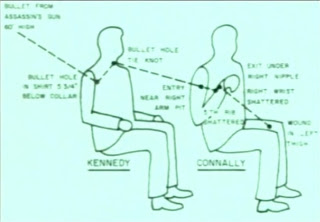First, let's look at where we have been and where we are now:
Web 1.0: Where We Were (ca. 1994-2004):
- HTML Web pages
- Browsers
- E-mail becomes ubiquitous as business tool
- Online stores
- Search engines
- Dot-com boom (and bust!)
Web 2.0: Where We Are (ca. 2004 – present)
- Fast connections enable more vibrant content
- User generation of much of that content
- Online sales become a measurable and increasingly important part of the economy
- Key words to enhance search engine position
- Click-through advertising
- Social networking sites – MySpace, YouTube, etc. – create online communities and vastly enhance online marketing (including viral marketing)
- Wikis
- Wireless devices
And now that we are just getting used to Web 2.0 and all paradigm shift that has provided a forum for everyone from genius to wacko, there is a small percentage that is already discussing Web 3.0.
I am not negating the importance of looking ahead. Quite to the contrary. Forward thinking people are the pioneers that will open new terrain on the internet frontier. But, since my clients expect me to stay ahead of the curve for them, I will herein post my thoughts on what will be called Web 3.0.
First, Web 3.0 will begin to see the real birth of the semantic web. The current web requires human command and control to determine the usefulness of content, the semantic web is "...a vision of information that is understandable by computers, so that they can perform more of the tedious work involved in finding, sharing and combining information on the web." The architectural foundations for this shift will be laid soon as the necessary means of tracking user informational preferences are being understood through such social data experiments as Digg and other bookmarking sites.
Artificial intelligence will begin to take a larger role on the internet. Early versions of AI can be found on most dating web sites as the programmers attempt to expand their ability to understand and communicate with people in these environments. Current AI systems are limited to simple response and answer relationships but will continue to expand and evolve as more data becomes available to them. I am not predicting the birth of the HAL 9000 by any stretch of the imagination, but continued advances in AI will begin to reap real benefits for regular users.
Web 3.0 will also extend the reach of web-based applications such as Google Apps. New technology will "close the connection loop" with these web based applications by allowing users the ability to utilize those applications even when they are disconnected from the internet. Once this functionality is deployed, a larger percentage of the business world will adopt these online applications.
Also we will see a blurring of the lines between web users. The web will become a true communal medium where the most timely and well-accepted opinions and ideas will gain credence. In essence, the web will become a truly democratic marketplace for ideas. The freely written opinions of users will have the same power as the marketing budgets of multinational corporations. Credibility will become the real currency of the web as those who establish themselves as experts in a field of knowledge will have greater sway over subscribed opinions.
Essentially, Web 3.0 will be an extension of Web 2.0 concepts and ideology with further growth in online applications capability. If you have an idea for how this might benefit your business then I recommend you contact me so we can start making plans for you to take advantage.
Sources:
1) bMighty.Com Article: Web 3.0
2) Wikipedia: Web 3.0
3) PC Magazine Article: Web 3.0

